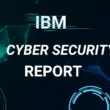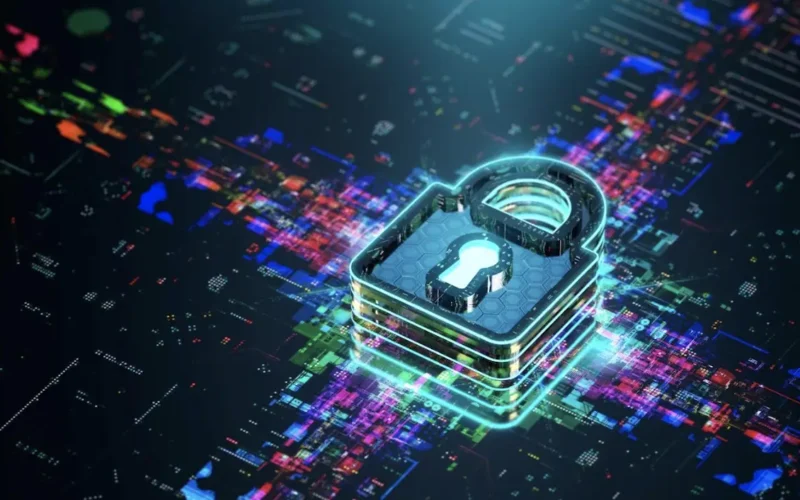In recent years, the digital world has witnessed several high-profile cyber-attacks ranging from ransomware to sophisticated data breaches that have exposed the personal information of millions. These events show us the vitality of cybersecurity — the specialty responsible for protecting systems, networks, and data from cyber-attacks.
For computer scientists, cybersecurity is not only a technical challenge but an essential facet of their role in the digital age. These professionals act as the digital realm’s custodians, safeguarding confidential data, securing the system, and upholding ethical standards. This article sheds light on why cybersecurity is crucial to a computer scientist, with its role in preventing unauthorized access, mitigating cyber threats, and establishing safe and reliable digital platforms.
Safeguarding sensitive information
Safeguarding sensitive information is one of the pivotal issues in the digital world. This data ranges from personal data, such as social security numbers and home addresses, to financial data, including bank account numbers and investment portfolios.
A key strategy in defending this sensitive information involves the use of encryption and secure coding practices. These practices ensure that data is not only difficult to access without authorization but also remains intact and confidential. The role of various coding languages in this context cannot be overstated. They serve as essential tools for computer scientists in developing software that is robust against cyber threats.
Recognizing the importance of these skills, institutions like Baylor University offer comprehensive programs such as their online Master of Computer Science, focused on equipping students with the knowledge to implement secure coding practices effectively, ensuring the safety of digital information across platforms.
Preventing unauthorized access
Preventing unauthorized access is a cornerstone of effective cybersecurity. It is about ensuring that only the right people can enter your digital house while keeping everyone else out. This process hinges on three main pillars: authentication, authorization, and secure network design.
Authentication verifies who you are, often through passwords but increasingly via more secure methods like biometrics or security tokens. Authorization then decides what one can do or see once they are in. In addition, methods like multi-factor authentication (MFA), which involve using two or more verification factors, are utilized to strengthen the platform’s security.
Mitigating cyber-attacks
Mitigating cyber-attacks is a critical challenge in the realm of cybersecurity. These attacks include phishing, where attackers trick individuals into revealing sensitive information, and malware, malicious software designed to harm or exploit any programmable device or network. Such attacks can be devastating, leading to loss of sensitive data, financial damage, and erosion of trust among users and customers.
Addressing these threats needs proactive strategies. For instance, regular updates and security patches play a pivotal role in this defense, as they address vulnerabilities that attackers could exploit. Teaching users how to identify possible threats and put strong security measures in place can significantly reduce the risk of cyber-attacks.
Ensuring system reliability and availability
Ensuring system reliability and availability is crucial in the digital landscape, where downtime can lead to significant losses and eroded trust. Cybersecurity measures are vital in shielding systems from DDoS (distributed denial of service) attacks and other threats that aim to overwhelm and incapacitate digital services. These attacks can render websites and online services inaccessible, causing frustration for users and financial damage to businesses.
To combat this, organizations implement robust cybersecurity protocols that include traffic filtering, rate limiting, and deploying redundant network resources to absorb the impact of such attacks. Moreover, the central role of the backup systems must be emphasized. Together with meticulous disaster recovery plans, these systems maintain the integrity of the data and provide a swift restoration of services, limiting downtime and guaranteeing continuous functioning.
Ethical considerations and professional responsibility
Ethical considerations and professional responsibility lie at the heart of cybersecurity for computer scientists. They often navigate complex moral dilemmas, particularly in balancing the need for surveillance to ensure security and the imperative to respect privacy rights. This tightrope walk involves making tough decisions about how much monitoring is necessary to protect against cyber threats without infringing on individual freedoms.
Ethical conduct in this domain requires a commitment to transparency, accountability, and the prioritization of user privacy. Over time, these individuals need to frequently reflect on the influence of their decisions, keeping track of the high ethical values they adhere to in their quest to make the cyber world safe and pleasant.
Compliance with regulations
Meeting regulatory compliance, which connects to how organizations manage their sensitive data, is closely monitored. Key regulations, like the General Data Protection Regulation (GDPR) in Europe and the Health Insurance Portability and Accountability Act (HIPAA) in America, have set strict data safety and privacy standards. These regulations mandate that organizations take proactive steps to protect personal and health information, imposing heavy fines and legal consequences for non-compliance.
Organizations that do not comply with these principles can face heavy penalties, loss of customers’ trust, and damage to the corporate image. The personal risk for those involved with these organizations encompasses potential lawsuits and professional reprimands.
Protecting reputation and trust
Cybersecurity breaches can profoundly impact an organization’s reputation, and it is challenging to recover from such damage. In the digital economy, where more and more transactions and interactions are happening online, trust is the vital medium of exchange. A single breach can trump all the previous efforts of customer confidence building, resulting in a loss of business and a tarnished brand image.
Furthermore, any news regarding a cyber security failure often goes viral, thus having even more negative consequences on an organization’s reputation. Therefore, establishing robust cybersecurity controls is not only about safeguarding data but also about upholding the trust and confidence that customers invest in a business.
Cybersecurity is the core of data protection
Cybersecurity is a core security mechanism responsible for keeping sensitive data safe, preventing unauthorized entry, implementing proper mitigating measures, guaranteeing the system’s reliability, and guarding ethical standards while adhering to regulations to maintain the reputation and trust of the entity.
For computer scientists, this is not just a technical challenge but a professional responsibility that demands continuous adaptation and innovation in the face of evolving threats. Computer scientists, and even all the other stakeholders in the digital world, are responsible for continually being educated by best practices, new technologies, and methodologies and dedicating efforts to securing the digital world.











